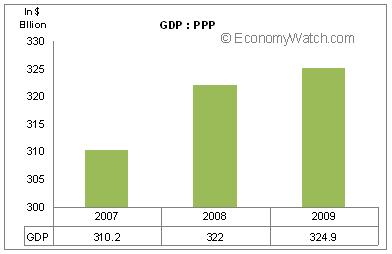The Philippines or the Republic of the Philippines (officially), is a Southeast Asian country. It is an archipelago of 7,107 islands located in the western Pacific Ocean. Its neighboring countries are Vietnam, Borneo and Indonesia. Manila is its capital city. Geographically, the Philippines can be divided into three parts, namely, Luzon, Visayas, and Mindanao. With all these islands combined, the country’s coastline is the fifth longest in the world, spanning 36,289 kilometers. It is considered as Asia’s largest Catholic country of Asia, since Spanish colonial times. Further, the Philippines is the world’s 12th most populated country with approximately 92 million people (as of 2009).
The country can be reached by plane. Other means of traveling are not feasible as the Philippines is an archipelago. Some major airports are in Manila, Cebu, Davao, Clark (Angeles), Kalibo, Laoag, Subic (Zambales), and Zamboanga.
Philippines Economy: Profile
The Philippines economy is the world’s 47th largest economy (as of 2008). The Philippine peso is the country’s unit of currency. The Philippines has undergone a transformation from being an agriculture based country to that of a newly industrialized country. The economy is now vastly dependent on the services and manufacturing sector. The country has a total labor force of around 38.1 million. As of October 2009, its foreign currency reserves stood at US$36.13 billion.Philippines Economy: Statistics
GDP (purchasing power parity): GDP (official exchange rate): $160.6 billion (2009 est.)
GDP (official exchange rate): $160.6 billion (2009 est.) GDP - real growth rate:
- 0.9% (2009 est.)
- 3.8% (2008 est.)
- 7.1% (2007 est.)
- $3,300 (2009 est.)
- $3,400 (2008 est.)
- $3,300 (2007 est.)
Unemployment rate:
- 7.5% (2009 est.)
- 7.4% (2008 est.)
Inflation rate (consumer prices):
- 3.2% (2009 est.)
- 9.3% (2008 est.)
- Simple 93.4% (2003 est.)
- Functional 84.1% (2003 est.)
No comments:
Post a Comment